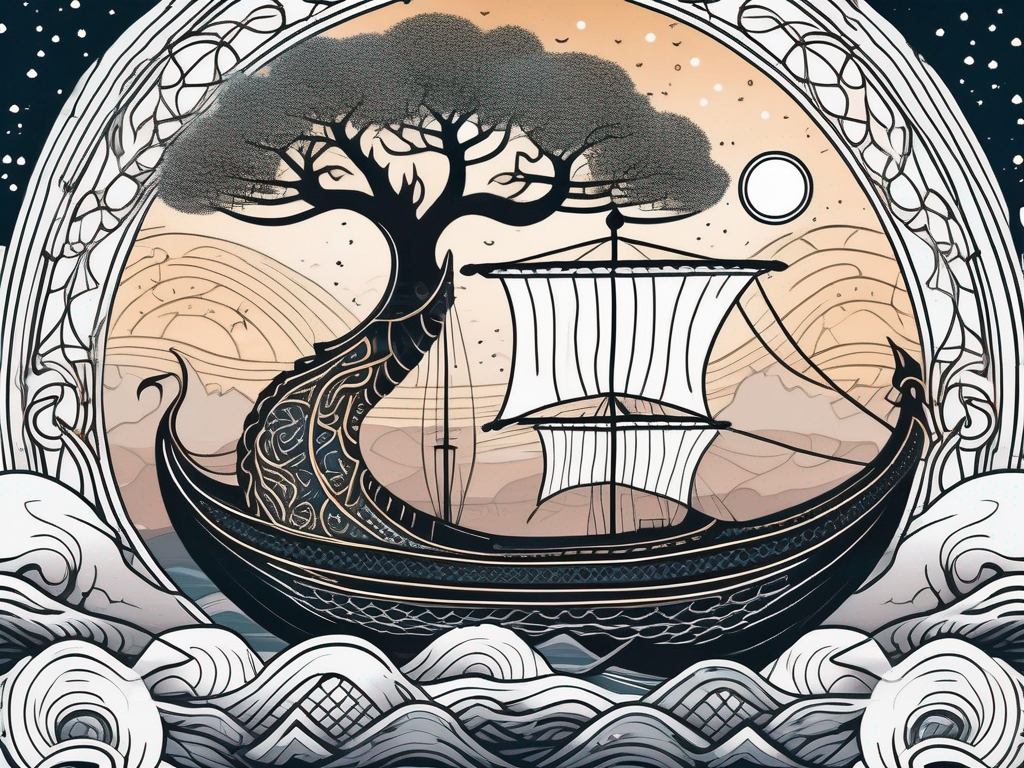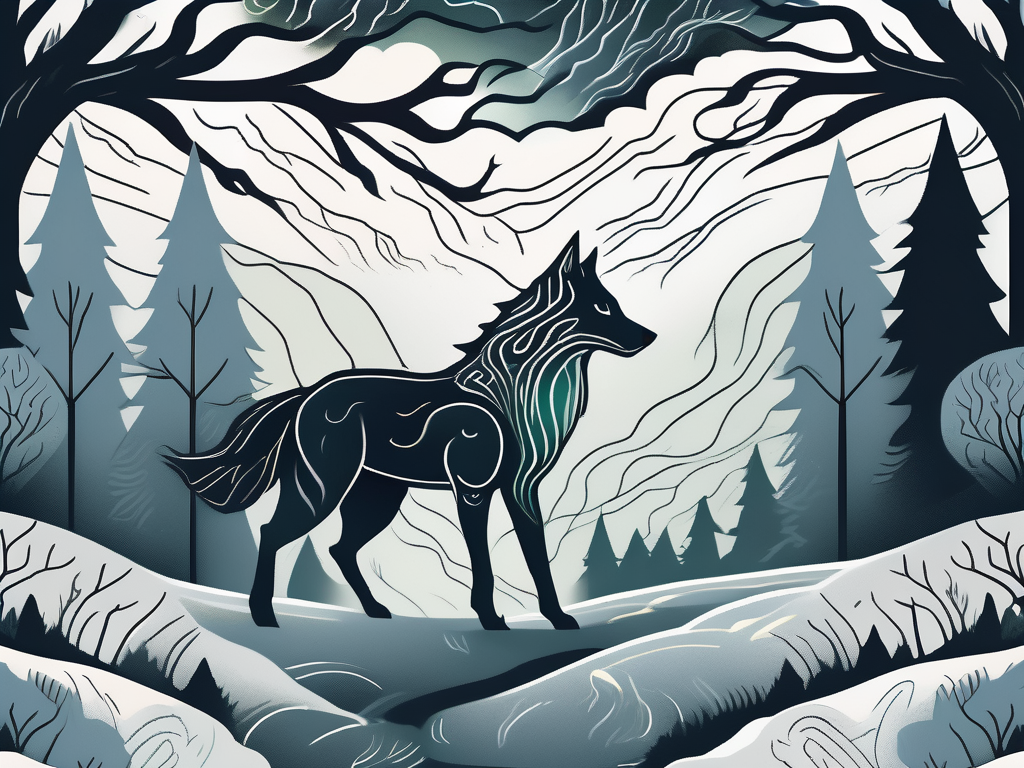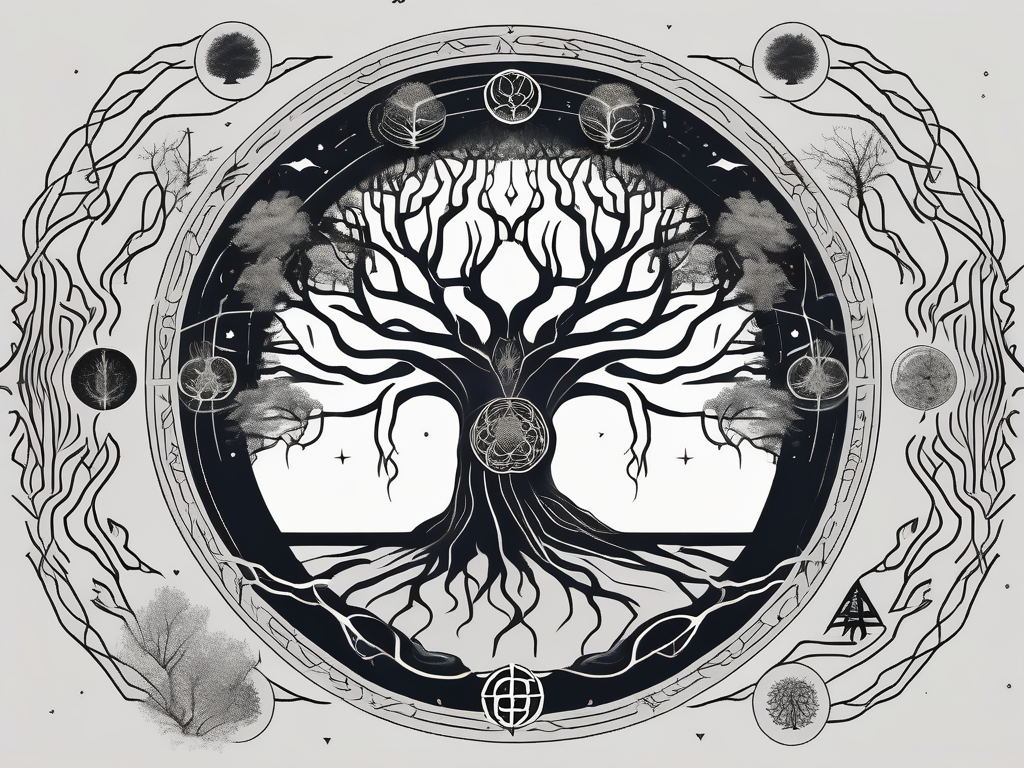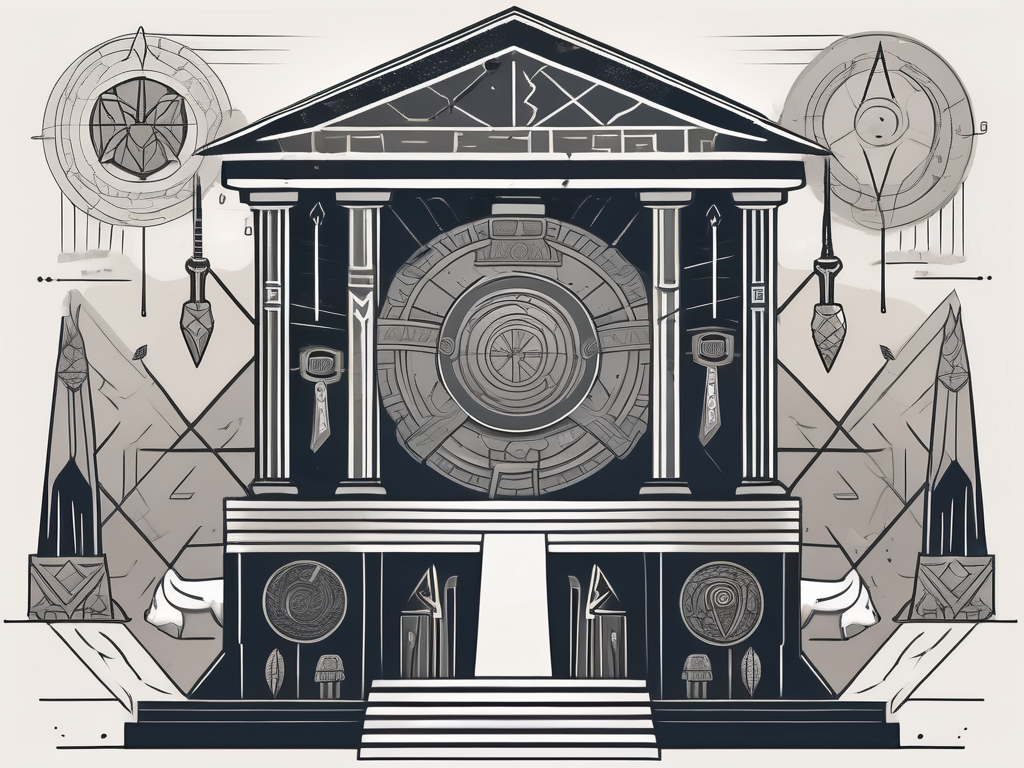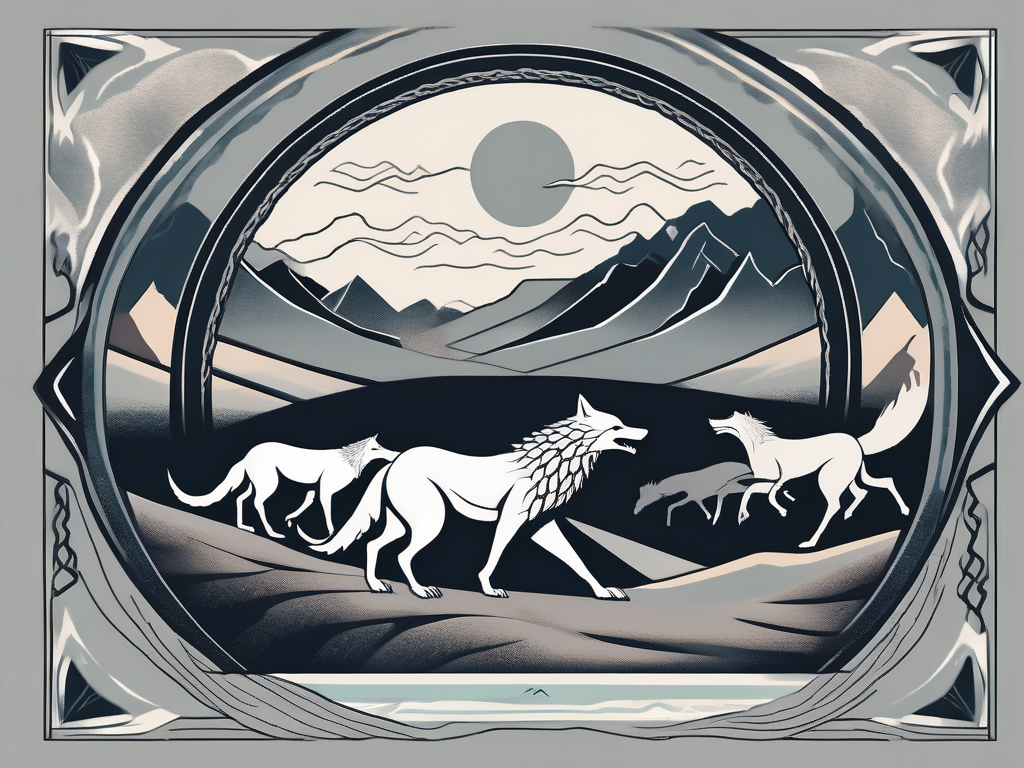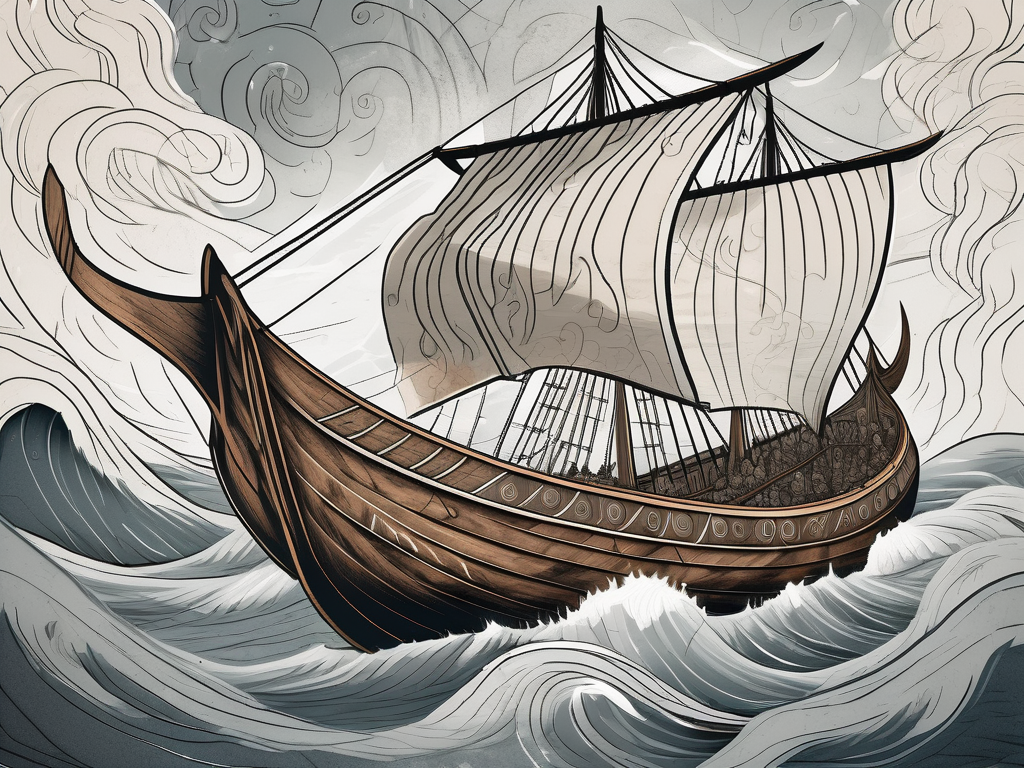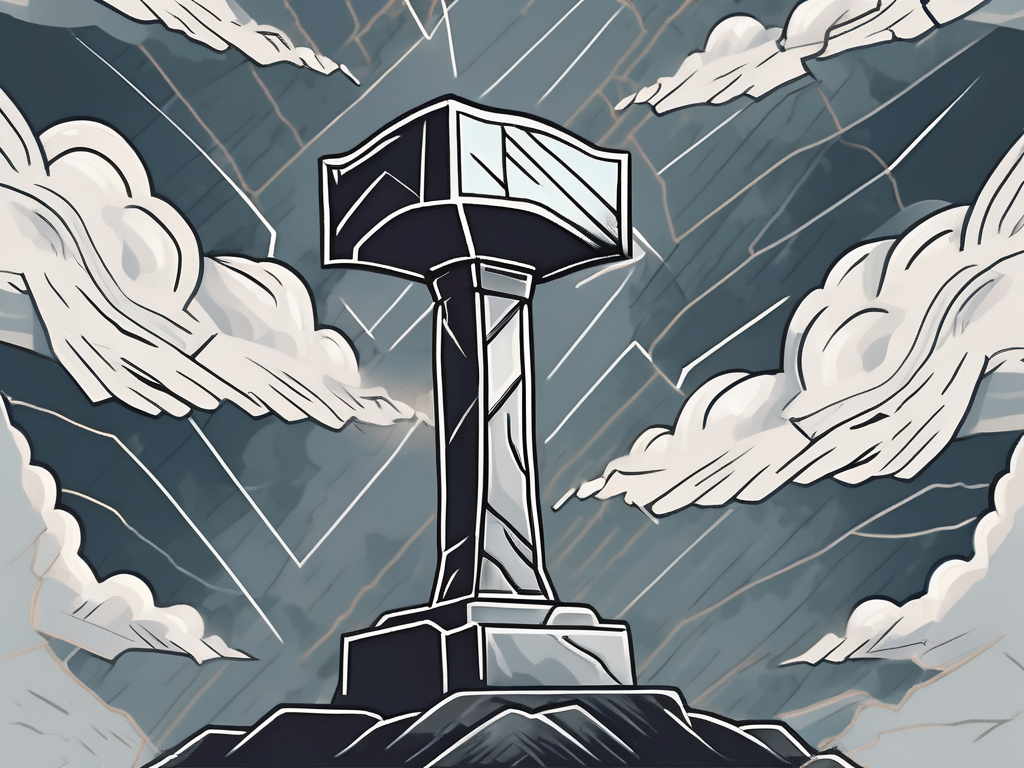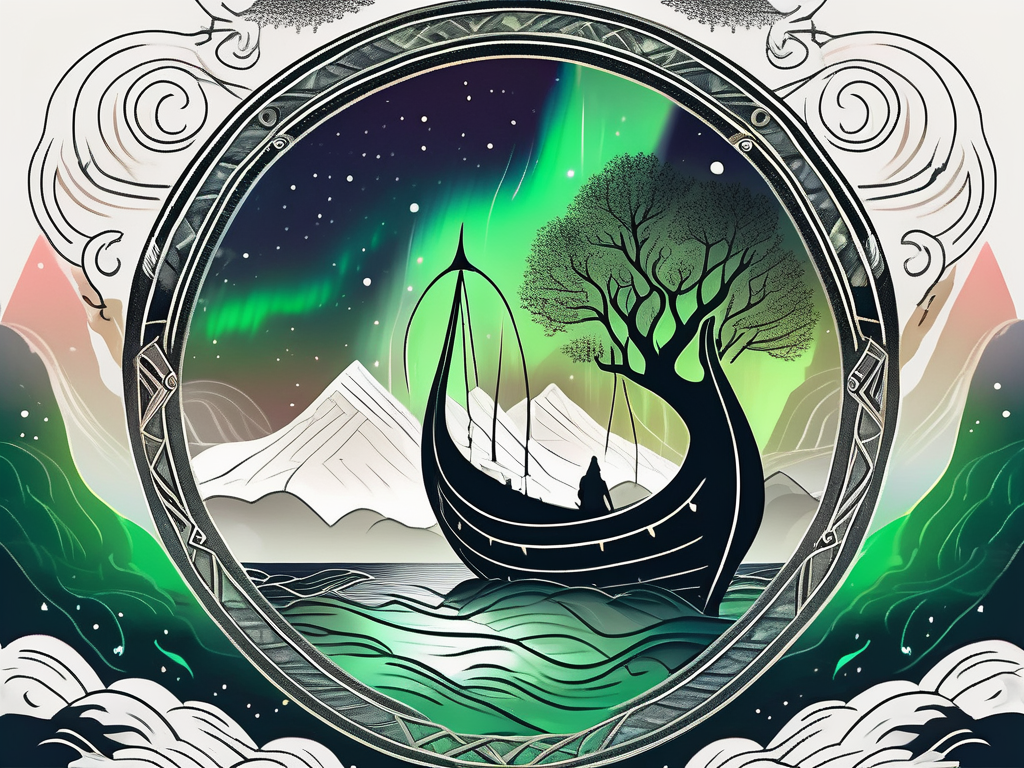Norse mythology is a world full of ancient tales, captivating characters, and epic adventures. From the powerful gods and goddesses to the mystical creatures and the vast realms they inhabit, there is so much to uncover and explore. So, let’s dive into the fascinating realms of Norse mythology and learn about the rich tapestry of stories that have captivated generations.
Understanding Norse Mythology
Before we embark on this incredible journey, it’s important to have a basic understanding of what Norse mythology is all about. It originated in the pre-Christian era when the Norse people, who lived in what is now Scandinavia, crafted stories to explain the world around them and their place in it. These myths have been passed down through generations, offering insights into their beliefs, values, and worldview.
The Norse people had a deep connection with nature, and their mythology reflected this bond. They believed that the world was inhabited by powerful beings, such as gods, goddesses, giants, dwarves, and various mythical creatures. These beings were not only responsible for the creation and maintenance of the natural world but also played a significant role in shaping human destiny.
Their mythology was not just a collection of fantastical tales but also served as a moral compass for the Norse society. It provided guidelines on how to live a virtuous life, emphasizing values such as bravery, honor, loyalty, and wisdom. The stories often depicted the consequences of deviating from these virtues, highlighting the importance of upholding them.
The Origins of Norse Mythology
The origins of Norse mythology can be traced back to the Viking Age, which lasted from the late 8th century to the 11th century. During this time, the Norse people, known for their seafaring and exploration, spread their stories across vast regions, leaving a lasting cultural impact. These tales were initially transmitted through oral tradition until they were later recorded in written form.
As the Norse people ventured into new lands, they encountered different cultures and beliefs. These interactions influenced their mythology, resulting in a rich tapestry of stories that incorporated elements from various sources. For example, the Norse gods Odin, Thor, and Loki bear similarities to the Germanic deities Woden, Thunor, and Loki, respectively. This blending of traditions added depth and complexity to Norse mythology.
Furthermore, the Norse people’s encounters with other cultures, such as the Celts and the Anglo-Saxons, also left an imprint on their mythology. They absorbed elements from these cultures, incorporating them into their own stories and expanding the scope of their mythological universe.
Key Themes in Norse Mythology
Norse mythology is filled with a wide array of themes that offer profound insights into the human experience. One recurring theme is the cycle of life and death, with the gods and mythical creatures often facing their fate with courage and valor. The concept of fate, known as “Wyrd,” played a significant role in Norse mythology, emphasizing the inevitability of one’s destiny.
Another central theme is the struggle between order and chaos, represented by the constant battle between the gods and their enemies. The gods, led by Odin, sought to maintain order and protect the world from the forces of chaos, often clashing with giants and other malevolent beings. This eternal conflict symbolized the ongoing struggle to maintain balance and harmony in the world.
Additionally, honor, glory, and the pursuit of knowledge are significant themes in Norse mythology. Heroes are celebrated for their bravery and cleverness, and wisdom is highly revered. The pursuit of knowledge, particularly through the acquisition of runes and magical arts, was seen as a noble endeavor. These themes resonate deeply with human emotions and aspirations, making the stories relatable even in the modern age.
By delving into the intricate world of Norse mythology, we can gain a deeper understanding of the Norse people’s worldview and the timeless themes that continue to captivate us today. So, let us embark on this journey together, exploring the realms of gods, heroes, and mythical creatures that make Norse mythology a treasure trove of wisdom and wonder.
The Pantheon of Norse Gods and Goddesses
No exploration of Norse mythology would be complete without delving into the pantheon of gods and goddesses who embody various aspects of the natural world and human condition.
The Norse pantheon is a rich tapestry of divine beings, each with their own unique powers and personalities. From the wise and powerful Odin to the mighty Thor and the cunning Loki, these gods and goddesses shape the world of Norse mythology.
Odin: The Allfather
At the top of the Norse pantheon sits Odin, the Allfather and the ruler of Asgard. With his deep wisdom and knowledge, Odin oversees war, poetry, and magic. He is often depicted with his iconic spear, Gungnir, and his two ravens, Huginn and Muninn, who bring him news from all corners of the nine realms.
Odin’s wisdom is legendary, and he is known to have made great sacrifices to gain knowledge. He is the god of inspiration, and it is said that poets and artists seek his guidance to unlock their creative potential. Odin’s thirst for knowledge is insatiable, and he is willing to go to great lengths to acquire it.
As the ruler of Asgard, Odin is responsible for maintaining the balance between the gods and the forces of chaos. He is a just and fair leader, but his decisions are not always popular. Odin’s quest for knowledge and power sometimes leads him down dark paths, and his actions can have far-reaching consequences.
Thor: The Thunder God
One of the most popular Norse deities is Thor, the mighty god of thunder. Known for his immense strength and his weapon of choice, the mighty hammer Mjolnir, Thor protects both gods and humankind from the forces of evil. His stories are filled with thrilling battles against giants and other mythical creatures.
Thor is a symbol of strength and bravery, and his thunderous presence inspires awe and fear in equal measure. He is the protector of both gods and mortals, and his battles against the giants are legendary. Thor’s hammer, Mjolnir, is a symbol of his power and authority. It is said that only those who are worthy can lift the hammer, and it grants its wielder incredible strength.
Despite his formidable appearance, Thor is not without his flaws. He is known for his quick temper and sometimes acts impulsively, which can lead to unintended consequences. However, his heart is always in the right place, and he is willing to put himself in harm’s way to protect those he cares about.
Loki: The Trickster
Loki, the mischievous and cunning trickster, adds a dynamic element to Norse mythology. He is a complex character who embodies both chaos and transformation. Sometimes an ally of the gods, other times their greatest adversary, Loki constantly keeps everyone on their toes with his intricate schemes and shape-shifting abilities.
Loki is a master of deception and manipulation. He is known for his quick wit and cleverness, which often gets him into trouble. Despite his mischievous nature, Loki is not inherently evil. He is a shape-shifter, able to take on different forms and personas, which allows him to navigate the realms undetected.
While Loki’s actions often cause chaos and disruption, they also serve as catalysts for change and growth. He challenges the status quo and forces the gods to confront their own weaknesses and limitations. Loki’s complex relationship with the other gods is a reflection of the ever-changing nature of the world and the constant struggle between order and chaos.
In conclusion, the pantheon of Norse gods and goddesses is a fascinating and diverse collection of divine beings. From the wise and powerful Odin to the mighty Thor and the cunning Loki, each deity brings their own unique qualities and contributions to Norse mythology. Their stories continue to captivate and inspire, reminding us of the complex nature of the human condition and the forces that shape our world.
The Nine Realms of Norse Cosmology
In Norse mythology, the cosmos is not limited to a single realm. Instead, it consists of nine interconnected worlds, each with its distinct characteristics and inhabitants.
Asgard: Home of the Gods
Asgard, the realm of the gods, is an awe-inspiring place. It is adorned with marvelous palaces and grand halls, including Valhalla, where courageous warriors are welcomed after their death in battle. Asgard serves as the central hub of the Norse universe, with the gods and goddesses residing there and overseeing the other realms.
Midgard: The Human World
Midgard, also known as Earth, is where humankind resides. This realm is a reflection of the struggles, triumphs, and everyday life experiences of humans. It is the stage for many epic adventures and encounters between gods, giants, and heroes.
Helheim: The Realm of the Dead
Helheim is the realm where those who did not die in battle, as well as those who led dishonorable lives, are sent after death. Ruled by the goddess Hel, it is a somber and bleak place, representing the concept of the afterlife in Norse mythology.
The Role of Mythical Creatures in Norse Mythology
Mythical creatures play a vital role in Norse mythology, adding depth and wonder to the stories.
Giants: The Eternal Enemies
Giant beings, often associated with chaos and destruction, are the eternal enemies of the gods and humanity. They are formidable adversaries, fiercely challenging the gods in epic battles that shape the fate of the cosmos.
Dwarfs: The Master Craftsmen
Dwarfs, known for their exceptional craftsmanship, are highly revered in Norse mythology. They are master artisans who create extraordinary weapons, treasures, and magical artifacts that play pivotal roles in the stories.
Elves: The Divine Beings
Elves, elegant and ethereal beings, are considered divine and hold deep connections to nature. They possess great wisdom and power, and their appearances in the tales often bring enchantment and intrigue.
As we explore the fascinating worlds of Norse mythology, we begin to unravel the complex tapestry of gods, mythical creatures, and realms that form the backbone of this captivating ancient tradition. The stories found within Norse mythology continue to inspire and intrigue us, offering timeless lessons and insights into the human experience. So, let us embrace the vibrant characters, astounding realms, and epic adventures as we embark on this extraordinary journey of discovery.
